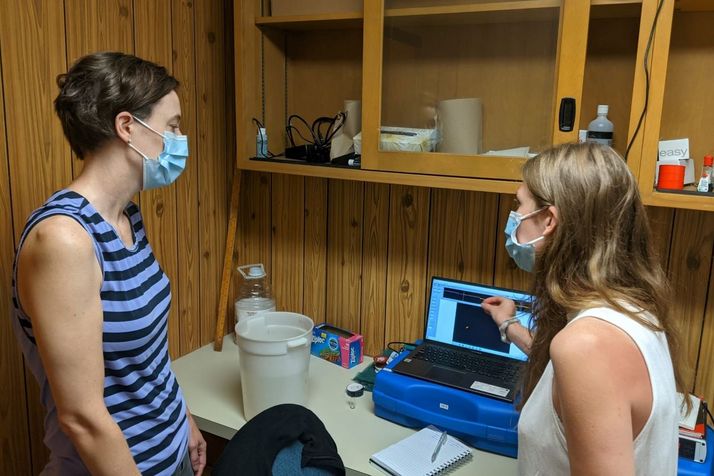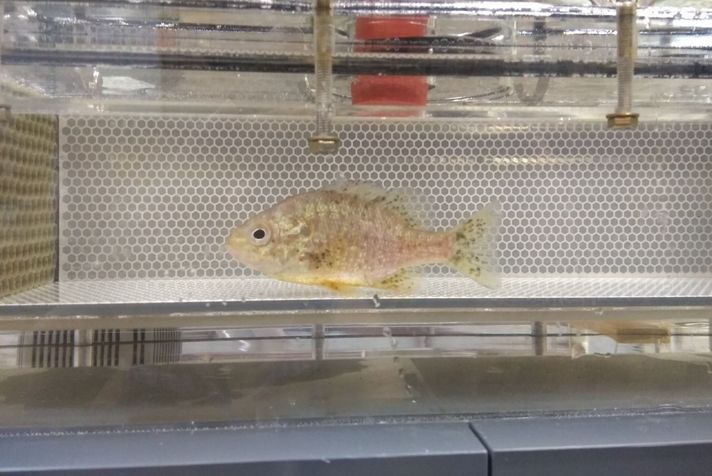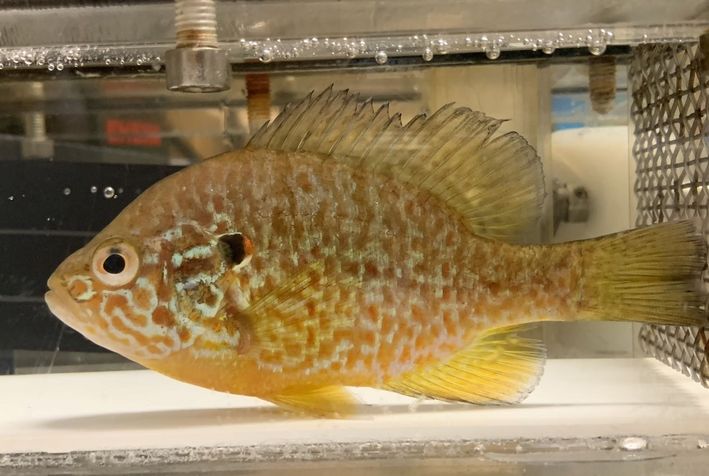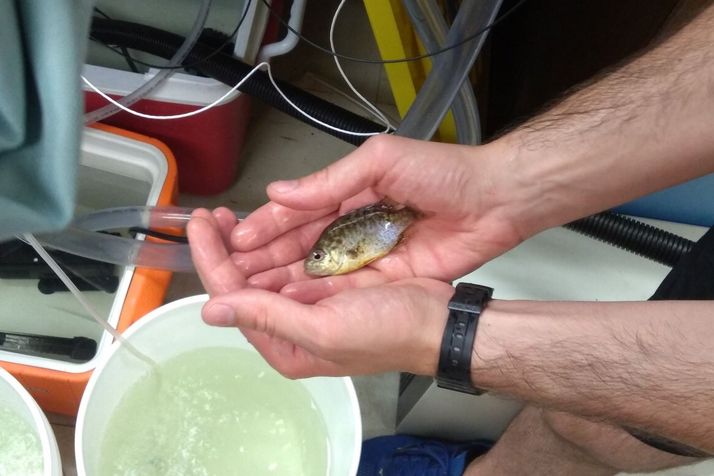Allison Shaw has two UMs to go to: University of Minnesota - Twin Cities, where she's an associate professor, and Université de Montréal, where she's spending the fall semester as a Fulbright Canada Scholar.
And appropriately enough, her specialty is migration - though not the human kind.
A biologist with a master's and PhD from Princeton University, in her research Shaw looks at animal migration from a multidisciplinary point of view, combining expertise in ecology, evolution, behavior and theory.
She's particularly fascinated by patterns of movement, which can change rapidly and influence the ecosystems of animals she studies. She constructs analytic and simulation models as tools to study the interface between ecological and evolutionary processes.
Shaw arrived here in August to spend time working in the lab of UdeM biology professor Sandra Binning, a PhD of Australian National University who specializes in fish and how they're affected by environmental stressors such as high temperatures and parasites.
We caught up with the busy pair to learn more about their cross-border collaboration.
First all, congratulations, Professor Shaw, on your Fulbright scholarship - it's good to see the border opening again to Americans looking to lend their expertise and learn from the Canadian experience.
Allison Shaw: Thank you. I'm grateful to Fulbright Canada for making this experience possible and to Université de Montréal for opening back up to international visits and collaborations, which have been shut down for so long because of COVID-19. I'm also grateful to Sandra for hosting me, and the opportunity to learn from her and her students about the fish and parasites they study.
Sandra Binning: And I should point out that beyond research, these visits are of huge benefit to PhD students who have lacked connections like these for the past year or two, when conferences moved online and trips were cancelled. So having Allison here is a win-win for everyone, really.
Tell us a little about your research interests, Professor Shaw - they have to do with how animals move around, right?
AS: Right. I study how animals - and plants - use movement to adapt to their environments, and what consequences movement has for individuals, populations and the interactions of species. My work tackles general questions across the topics of dispersal, animal migration, disease ecology, conservation and invasion biology. My main research approach is developing conceptual and mathematical theory, although always driven by the goal of gaining a deeper insight into the underlying biology.
So what work are you doing here, exactly, and where do you spend most of your time?
AS: Sandra and I are building a model to understand how fish - and other animals - might change their movement strategies depending on how many parasites they have, and conversely how movement that depends on infection shapes parasite infection within a population. Most of my time is spent writing computer code or working through math equations on whiteboards. The most valuable piece of my time here is being able to hash through ideas with Sandra in person and to learn from her students about their research projects and the system they work on. For example, her PhD student Jeremy De Bonville is measuring how parasites affect the ability of fish to swim, and another PhD student, Marie Levet, is measuring how parasite infection shapes the temperature preferences fish have when they move.
SB: Allison and I were lucky enough to spend three days up at the biology field station in Ste-Hippolyte, in the Laurentians, at the end of August where my students were running their experiments. Having Allison around to see the experiments and fish in person and being able to talk with the students as their data was coming in was immensely valuable.
In general, do we do things differently here than in the States, in regards to your discipline?
AS: Science is done a bit differently in every location, because different scientists have different perspectives, training and experiences. I build models based on my perspective - how I see the world. Travelling to new places like Canada helps me see the world differently, helps me uncover assumptions I didn't even know I was making in my work, and leads to better science as a result.
You mentioned theory. What role does it play in your research?
AS: Theory refers to the frameworks we use to make sense of the world. The models I build contribute to this theory. A key part of building models is making assumptions about what is most important (and should be focused on) versus what isn't (and can be ignored). This process is similar to scientific experiments that vary some factors while controlling for others. Just like there is no one 'best' experiment, there is no one 'best' model. Instead, as a discipline we build models with different sets of assumptions to get different perspectives on the organisms that we study. This is one reason why science would benefit from having a more diverse set of scholars, bringing diverse perspectives. A good starting point for a new perspective are biological examples that do not fit well with assumptions of existing theory.
What are some of those examples?
AS: Well, most models that study how movement depends on parasite infection makes the simplifying assumption of lumping all infected individuals together and contrasting them to uninfected individuals. In the fish Sandra's lab works on, there is clearly a difference between fish that have few parasites and those that have many, and there are rarely fish without any parasites. Thus, inspiring our current project looking at the role of the degree of infection.
Finally, what does studying fish tell us about ourselves, as humans?
AS: Although fish might not tell us anything about humans, models about fish can. The models I build typically span taxonomic groups - they might apply to fish, mammals, reptiles etc. Recently, we even used one of our models about seasonal movement of animals between environments to study how daily movement of people between home and work might shape the spread of COVID-19.
SB: We study fish not because we want to learn something about humans directly, but because freshwater resources like the lakes and streams we work in are so essential for our lives whether we realize it or not. Understanding how parasites and disease influence where and how fish move is important for predicting how infections might spread within and among lake systems and across species. Healthy fish mean healthy lakes, and healthy lakes are good not just for the organisms that live within them, but for humans as well.












